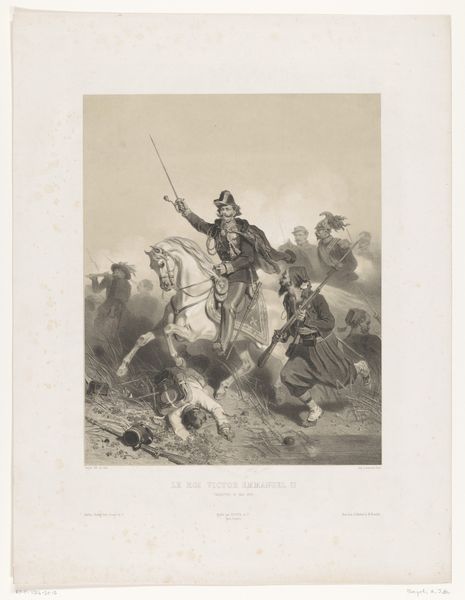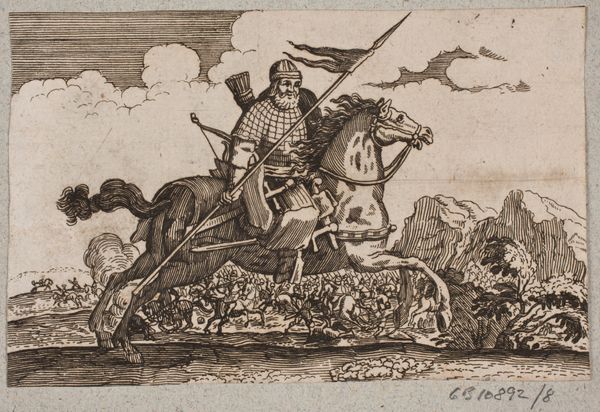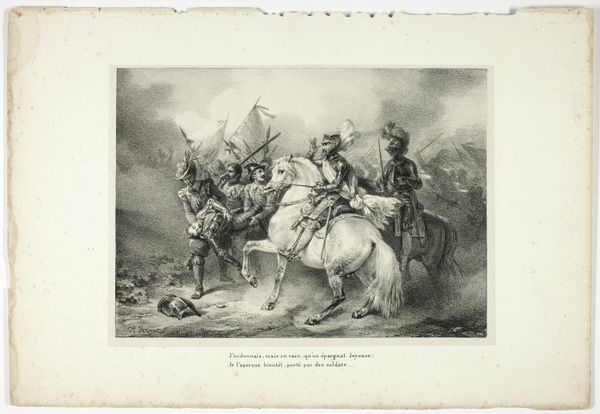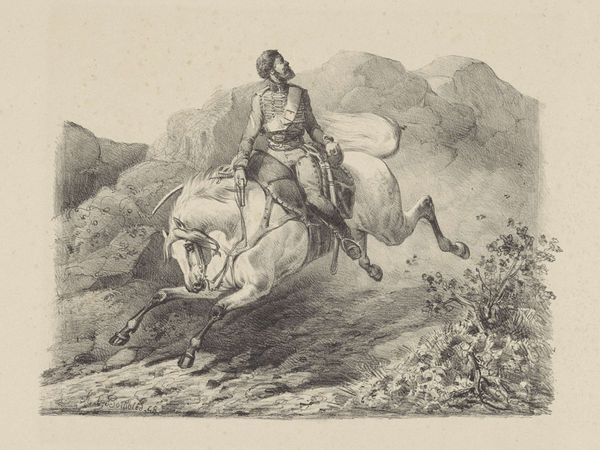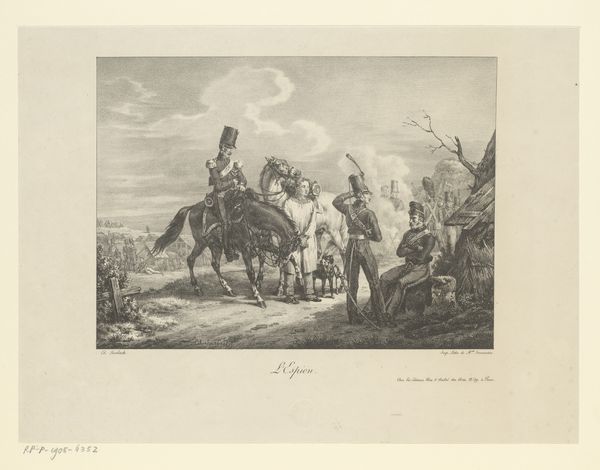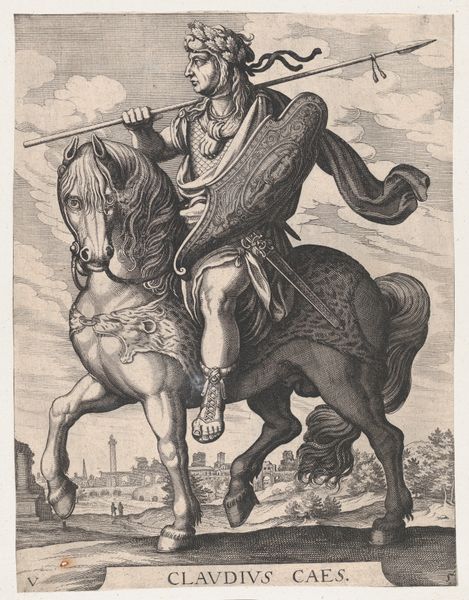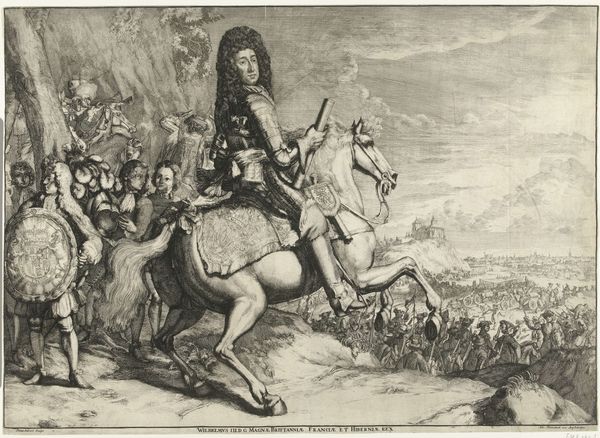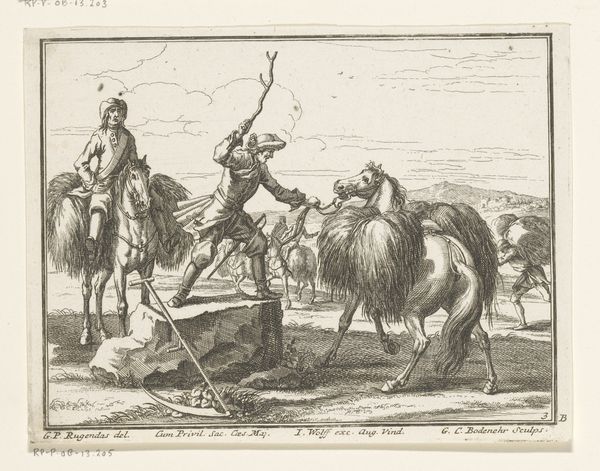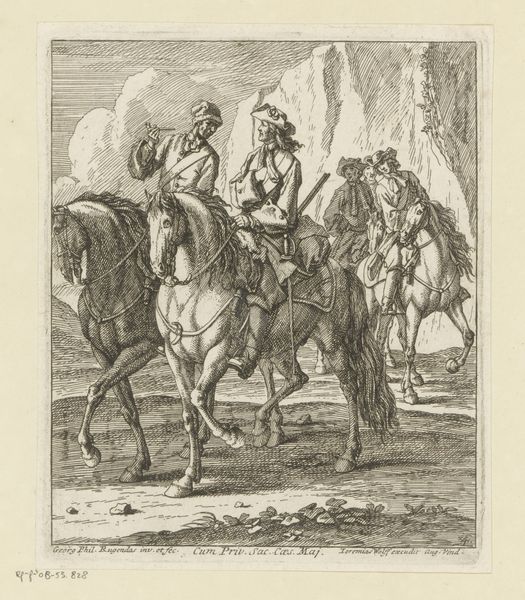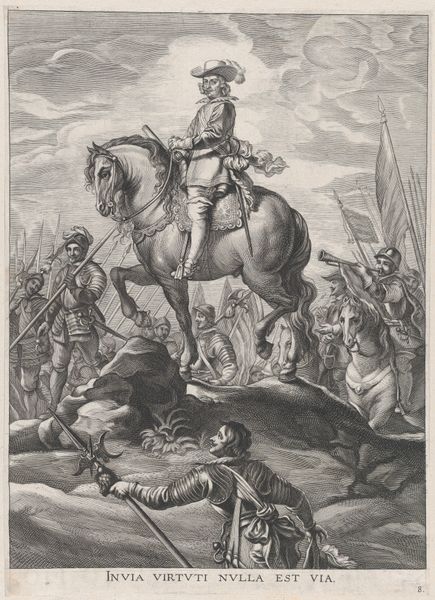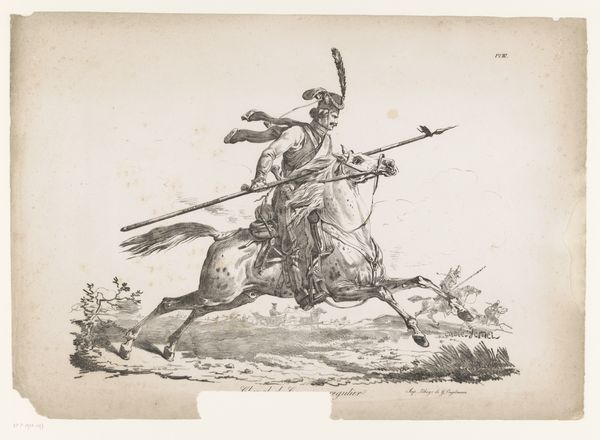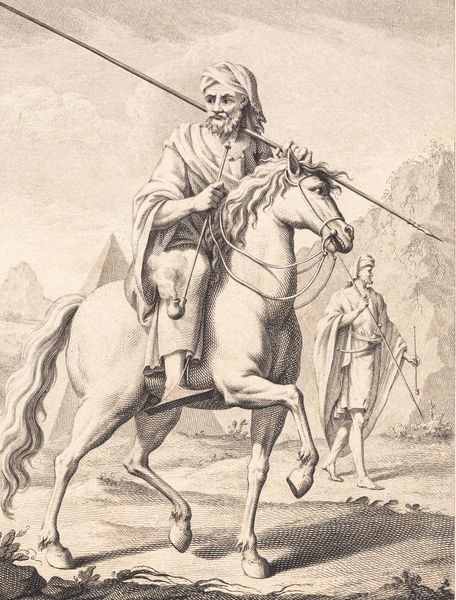
drawing, print
#
pencil drawn
#
drawing
# print
#
landscape
#
figuration
#
pencil drawing
#
romanticism
#
history-painting
#
academic-art
Dimensions: Sheet: 24 3/4 × 18 7/16 in. (62.8 × 46.9 cm) Image: 20 9/16 × 16 5/16 in. (52.2 × 41.4 cm)
Copyright: Public Domain
Curator: Look at this print; Aleksandr Orlovsky's "Kurd in military armor on horseback," created around 1819. It's currently housed at the Metropolitan Museum of Art. Editor: Immediately, I'm struck by the almost dreamlike quality. The muted tones, the swirling lines of the landscape – it creates a very romantic atmosphere, despite the martial subject. Curator: Indeed. Orlovsky, who spent considerable time documenting various military figures, seems to imbue this Kurd warrior with a sense of dignity, yet also hints at the political instability of the period. Remember, this was a time when empires were vying for control, influencing representation. Editor: And the composition cleverly reinforces that tension. The warrior is centrally placed, dominating the foreground. Yet, the crumbling architecture in the background and the somewhat chaotic rendering of the landscape suggest a world in flux. It is a play of strong subject matter, but its execution in a way suggests instability by the depiction style. Curator: Precisely! Orlovsky's choice to portray this figure isn't merely a visual record but also a commentary on power dynamics. Who gets represented, how they're represented; these choices were, and remain, inherently political. Editor: Speaking of representation, notice the intricate details in the horse's musculature. There’s a clear attention to form, and to capturing the texture of the fabrics and plumes of his headdress. The overall structure, though complex, guides your eye fluidly from one point to the next. Curator: And beyond pure aesthetic value, one has to see the cultural depiction. The man is surrounded by soldiers near what could have been an important military structure or capital, signaling his leadership capabilities and importance for his people. Orlovsky provides context. Editor: You are right. That’s definitely not *just* an aesthetic embellishment, but information added about that individual to highlight his importance in history. Overall the piece makes its case formally but also for historic context. I see the intention in his aesthetic, highlighting the figure of power. Curator: It is very good for viewers to ponder that intention behind the artwork and how power can be represented. Thank you! Editor: Agreed; thank you. A satisfying, complex interplay of form and context.
Comments
No comments
Be the first to comment and join the conversation on the ultimate creative platform.
